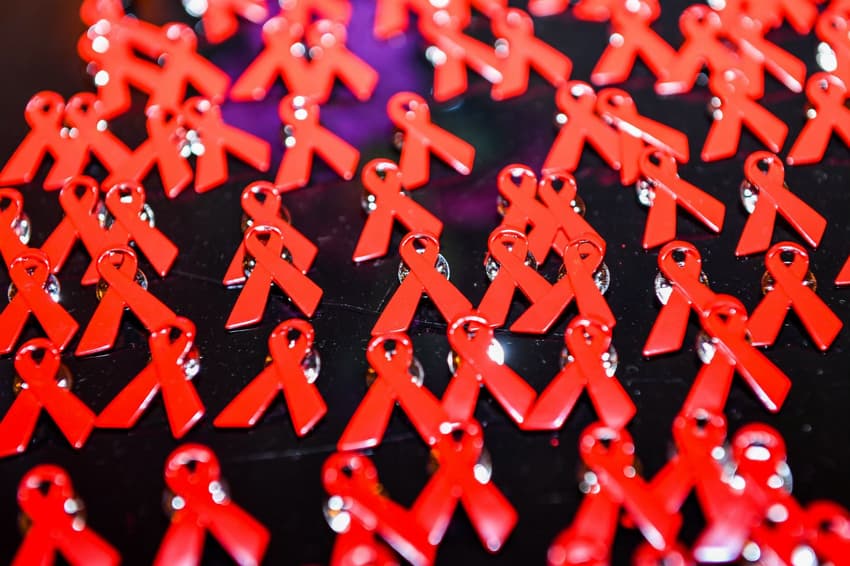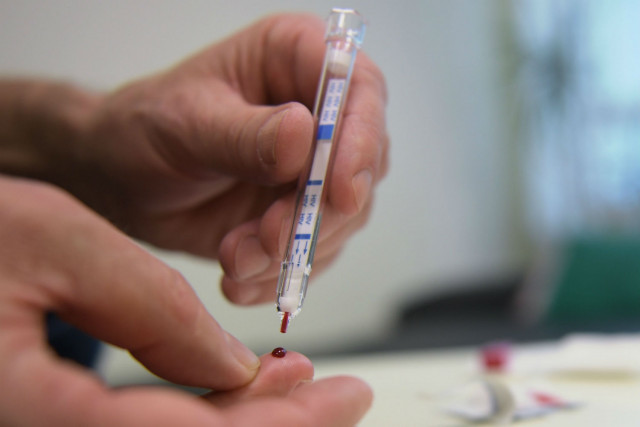Number of new HIV infections declines in Germany, but many still unknowingly positive

Before World AIDS day on December 1st, statistics about new cases of infection in Germany have been published. After years in which figures remained stable, positive and negative trends have been noted.
Fewer people in Germany were infected with the HIV virus last year, after a period of stagnation. The number of new cases of infection in 2017 was estimated to be 2,700, the Robert Koch Institute (RKI) stated in a report published on Thursday. Current calculations estimate that in the years 2014 to 2016, 2,900 cases were discovered each year.
“Thanks to successful preventative work and the good treatment options, Germany is one of the countries with the lowest rates of new HIV infection in Europe,” explained federal health minister Jens Spahn of the CDU, also a current candidate to become party leader.
He announced the intention to reduce the rate of new infections further and referred, as an example, to HIV self-tests, which are now available.
The RKI views the expansion of trial offers for target groups as a reason for the decline, in particular, for gay and bisexual men, among whom the number of new infections reduced from 2,300 in 2013 to 1,700 last year.
It added that the willingness to get tested has therefore “probably” increased, as dating app users are increasingly displaying information regarding their HIV status and their most recent test date.

HIV self tests are now available in Germany. Photo: DPA
Furthermore, an earlier starting date for treatment of HIV positive people in Germany has shown to be successful, according to the RKI. The reports states that 92 percent of people affected were undergoing treatment last year.
According to the RKI, a total of around 86,000 people in the country were living with HIV at the end of 2017. Despite the general decline, there are other trends to be noted. The estimated number of people in Germany who are infected, but don’t actually know it, has grown slightly. It has grown from approximately 10,800 cases at the end of 2011, to roughly 11,400 at the end of 2017. However, the figure has declined among gay and bisexual men.
Among heterosexuals, in contrast, a slow increase in new cases of infection can be seen. According to the RKI, this group often lacks awareness of their HIV risk, and so they get tested less frequently. Among women, the majority of HIV diagnoses are first discovered during routine pregnancy screenings.
Additionally, there are an estimated 6,000 people in Germany who have been diagnosed with HIV, but who are not receiving treatment. These could be people without documents or without health insurance.
According to the report, several thousand people are already taking medication for the prevention of HIV infection. The so-called Prä-Expositionsprophylaxe (PrEP) has been authorised in the EU since 2016 and has been available at an affordable price in Germany since autumn 2017.
HIV is mostly contracted through sex. When left untreated, the virus damages the body’s immune system and consequently often results in death. Nowadays with medication, the development of the immunodeficiency illness, AIDS, can be prevented. With successful therapy, the viral load in the bodies of HIV positive people can sink so far that, according to the RKI, “no more transmission” of the disease can be noted.
Comments
See Also
Fewer people in Germany were infected with the HIV virus last year, after a period of stagnation. The number of new cases of infection in 2017 was estimated to be 2,700, the Robert Koch Institute (RKI) stated in a report published on Thursday. Current calculations estimate that in the years 2014 to 2016, 2,900 cases were discovered each year.
“Thanks to successful preventative work and the good treatment options, Germany is one of the countries with the lowest rates of new HIV infection in Europe,” explained federal health minister Jens Spahn of the CDU, also a current candidate to become party leader.
He announced the intention to reduce the rate of new infections further and referred, as an example, to HIV self-tests, which are now available.
The RKI views the expansion of trial offers for target groups as a reason for the decline, in particular, for gay and bisexual men, among whom the number of new infections reduced from 2,300 in 2013 to 1,700 last year.
It added that the willingness to get tested has therefore “probably” increased, as dating app users are increasingly displaying information regarding their HIV status and their most recent test date.

HIV self tests are now available in Germany. Photo: DPA
Furthermore, an earlier starting date for treatment of HIV positive people in Germany has shown to be successful, according to the RKI. The reports states that 92 percent of people affected were undergoing treatment last year.
According to the RKI, a total of around 86,000 people in the country were living with HIV at the end of 2017. Despite the general decline, there are other trends to be noted. The estimated number of people in Germany who are infected, but don’t actually know it, has grown slightly. It has grown from approximately 10,800 cases at the end of 2011, to roughly 11,400 at the end of 2017. However, the figure has declined among gay and bisexual men.
Among heterosexuals, in contrast, a slow increase in new cases of infection can be seen. According to the RKI, this group often lacks awareness of their HIV risk, and so they get tested less frequently. Among women, the majority of HIV diagnoses are first discovered during routine pregnancy screenings.
Additionally, there are an estimated 6,000 people in Germany who have been diagnosed with HIV, but who are not receiving treatment. These could be people without documents or without health insurance.
According to the report, several thousand people are already taking medication for the prevention of HIV infection. The so-called Prä-Expositionsprophylaxe (PrEP) has been authorised in the EU since 2016 and has been available at an affordable price in Germany since autumn 2017.
HIV is mostly contracted through sex. When left untreated, the virus damages the body’s immune system and consequently often results in death. Nowadays with medication, the development of the immunodeficiency illness, AIDS, can be prevented. With successful therapy, the viral load in the bodies of HIV positive people can sink so far that, according to the RKI, “no more transmission” of the disease can be noted.
Join the conversation in our comments section below. Share your own views and experience and if you have a question or suggestion for our journalists then email us at [email protected].
Please keep comments civil, constructive and on topic – and make sure to read our terms of use before getting involved.
Please log in here to leave a comment.